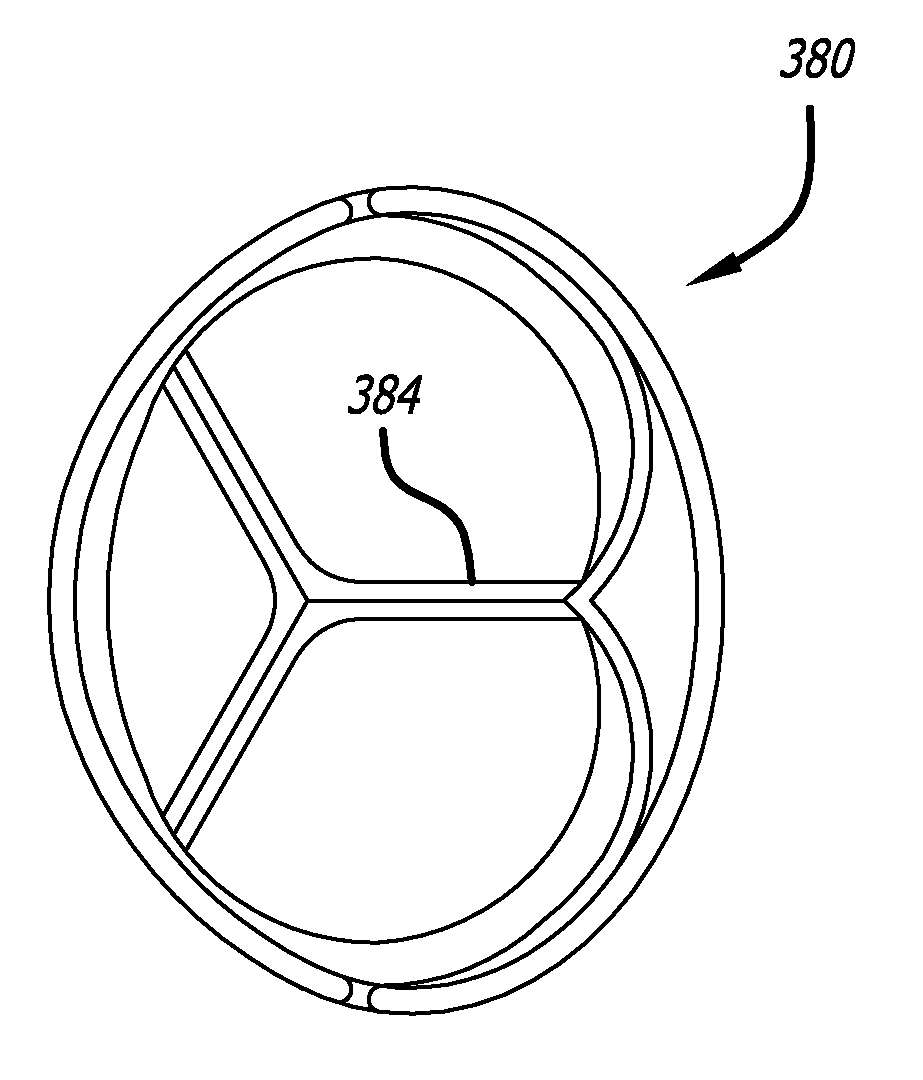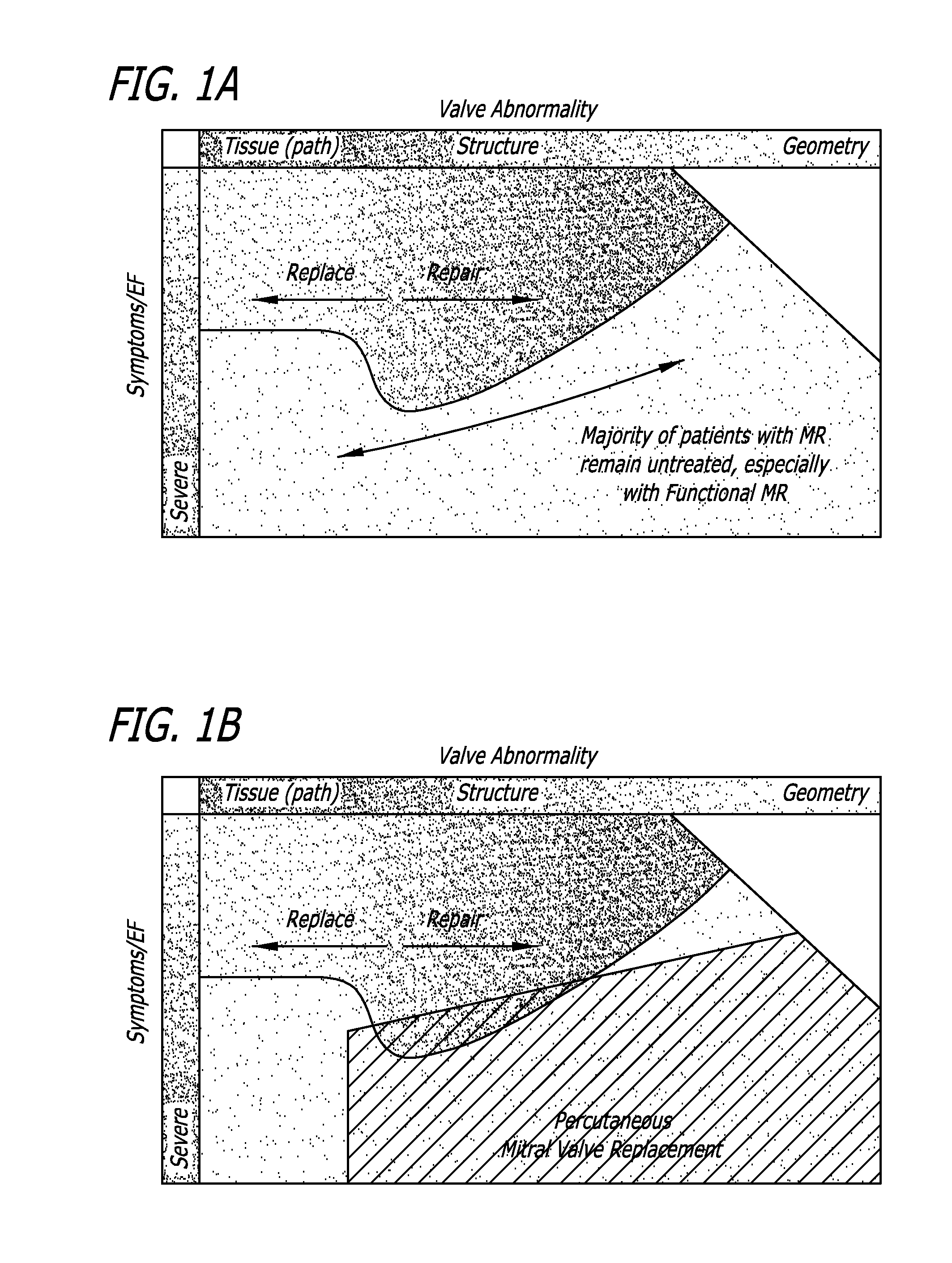Heart valve assembly systems and methods
- Summary
- Abstract
- Description
- Claims
- Application Information
AI Technical Summary
Benefits of technology
Problems solved by technology
Method used
Image
Examples
Embodiment Construction
[0070]Referring now to the drawings, which are provided by way of background and example, and not limitation, the present disclosure relates to medical interventional procedures and devices. In various aspects, heart valve repair is addressed and in particular, mitral valve reduction approaches are presented.
[0071]With reference to FIGS. 1A-B, there is shown a graphical representation of a potential patient population suffering from MR. Patents are classified by valve abnormality versus the severity of symptoms (i.e. ejection retraction). A decision to be made involves whether to replace or repair the subject valve. However, it has been found that a majority of patients with MR are left untreated. This is especially true with functional MR. It has been determined that such patients can be treated using a percutaneous mitral valve implant approach.
[0072]In open surgical valve replacement, the valve is implanted in its functional configuration and size. Additionally, conventional arti...
PUM
 Login to View More
Login to View More Abstract
Description
Claims
Application Information
 Login to View More
Login to View More - R&D
- Intellectual Property
- Life Sciences
- Materials
- Tech Scout
- Unparalleled Data Quality
- Higher Quality Content
- 60% Fewer Hallucinations
Browse by: Latest US Patents, China's latest patents, Technical Efficacy Thesaurus, Application Domain, Technology Topic, Popular Technical Reports.
© 2025 PatSnap. All rights reserved.Legal|Privacy policy|Modern Slavery Act Transparency Statement|Sitemap|About US| Contact US: help@patsnap.com



